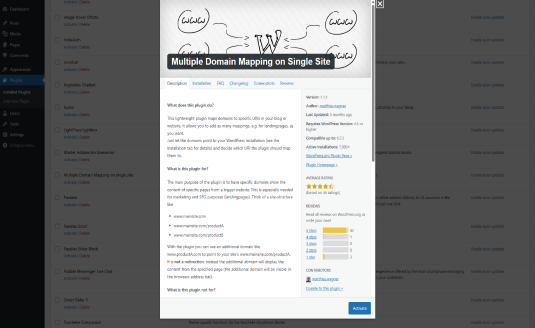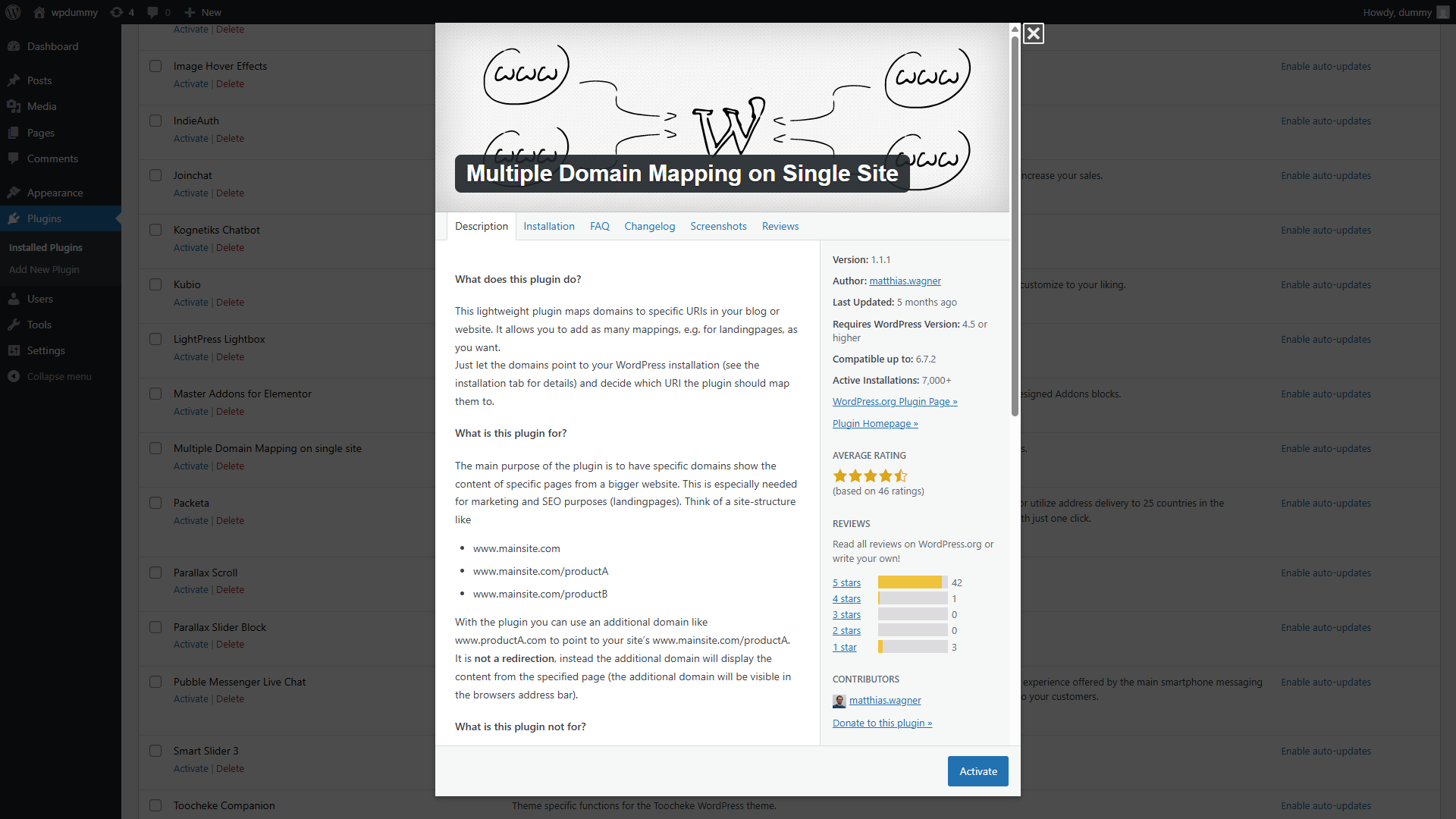Introduction
Multiple domain mapping allows a single WordPress installation to serve different domains while maintaining unique content, branding, and user experiences. This is particularly useful for businesses managing multiple brands, regional sites, or different product lines without maintaining separate WordPress installations.

Benefits of Multiple Domain Mapping
- Cost and Resource Efficiency: Instead of setting up multiple WordPress sites, you can manage everything from a single dashboard.
- Consistent Maintenance: Updates, plugins, and themes can be managed centrally, reducing maintenance overhead.
- SEO Advantages: Each mapped domain can have its own SEO strategy, including different keywords and metadata.
- Improved Branding: Businesses can maintain distinct brand identities under separate domains.
- Better User Experience: Users visiting different domains see content that appears to be from a dedicated website, without redirection confusion.
Features of a Multiple Domain Mapping Plugin
- Custom Domain Assignment: Map multiple domains to different sections or pages of a site.
- SEO Optimization: Set unique metadata, permalinks, and sitemaps for each domain.
- Domain-Specific Content: Display different content based on the domain accessed.
- User Role Management: Restrict content access based on the mapped domain.
- SSL and Security: Supports HTTPS for all mapped domains.
- Redirect Handling: Avoids unwanted redirections while ensuring proper indexing.
- WooCommerce Compatibility: Useful for e-commerce stores managing different brands.
How to Set Up Multiple Domain Mapping in WordPress
- Choose a Suitable Plugin
- Popular plugins include WP Multi Domain, Multiple Domain Mapping on Single Site, and WP Landing Kit.
- Install and Activate the Plugin
- Go to
Plugins > Add Newand search for the plugin. - Click
Installand thenActivate.
- Go to
- Configure the Plugin Settings
- Navigate to
Settings > Domain Mapping. - Add the domains you want to map.
- Navigate to
- Update DNS and Domain Records
- Point each domain’s A record to your WordPress server’s IP address.
- Ensure correct CNAME records if necessary.
- Set Up Domain-Specific Rules
- Assign different pages or sections to specific domains.
- Define custom content rules for each domain.
- Test and Verify
- Visit each mapped domain to ensure proper loading.
- Check for mixed content or redirect issues.
- Test SSL functionality.
Best Practices for Multiple Domain Mapping
- Use Unique Content: Ensure mapped domains have distinct content to avoid SEO penalties.
- Optimize Performance: Utilize caching and CDN services to improve load times.
- Monitor SEO Performance: Regularly check indexed pages and rankings.
- Ensure SSL Compatibility: Secure all mapped domains with HTTPS.
- Test Mobile Responsiveness: Verify usability across devices.
Conclusion
Multiple domain mapping on a single WordPress site is an efficient way to manage multiple brands, products, or regional websites while maintaining a unified backend. By using the right plugin and best practices, businesses can enhance their digital presence, streamline operations, and improve user experiences across multiple domains.





